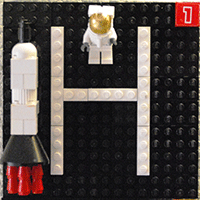Neon
Neon exists as a monoatomic gas. If electric current is passed through neon gas, the gas gives off a red glow. This is now neon lights are made. next element previous element
Neon exists as a monoatomic gas. If electric current is passed through neon gas, the gas gives off a red glow. This is now neon lights are made. next element previous element
When a fluorine atom gains an electron, it becomes a fluoride ion: F + electron –> F– Teeth are often treated with fluoride. This is because when fluoride substitutes for hydroxide in hydroxyapatite (the mineral in teeth), a stronger mineral results: Ca10(PO4)6(OH)2 + 2 F– –> Ca10(PO4)6(F)2 + 2 OH– next element […]
Oxygen is necessary for the combustion (burning) of carbon-containing fuels. For example, the combustion of methane is represented by: CH4 (g) + 2 O2 (g) –> CO2 (g) + 2 H2O (g) Combustion of carbon-containing fuels is the primary source of energy for a variety of processes on earth. Oxygen is also required for the […]
Nitrogen is found in large amounts in fertilizer. One simple example of a nitrogen-containing explosive is nitrogen triiodide (NI3). Nitrogen triiodide, like many explosives, forms N2 gas upon detonation: 2 NI3 (s) –> 3 I2 (g) + N2 (g) The formation of N2 (g) releases almost a megajoule per mole. This energy release upon the […]
Carbon containing molecules make up living things. Diamonds are made from carbon atoms arranged in a tetrahedral fashion. A molecule called buckminsterfullerene is comprised of 60 carbon atoms arranged in a soccerball pattern. next element previous […]
Boron, in the form of diboron trioxide (B2O3), is found in borosilicate glass. Borosilicate glass is often used in laboratories, because it resists breaking when exposed to large temperature fluctuations. next element previous element

Helium was first discovered on the sun though an analysis of the solar spectrum. At normal temperatures and pressures, helium exists as a monoatomic gas. The density of helium gas (0.2 grams per liter) is less than that of air (1.2 grams per liter), and because of this a balloon filled with helium […]

Hydrogen is the most abundant element in the universe. On Earth, it is usually found as a diatomic gas (H2 ). The reaction of hydrogen gas with oxygen gas to form water releases a tremendous amount of energy: 2H2 (g) + O2 (g) –> 2 H2 O (l) + Energy As a result of the […]